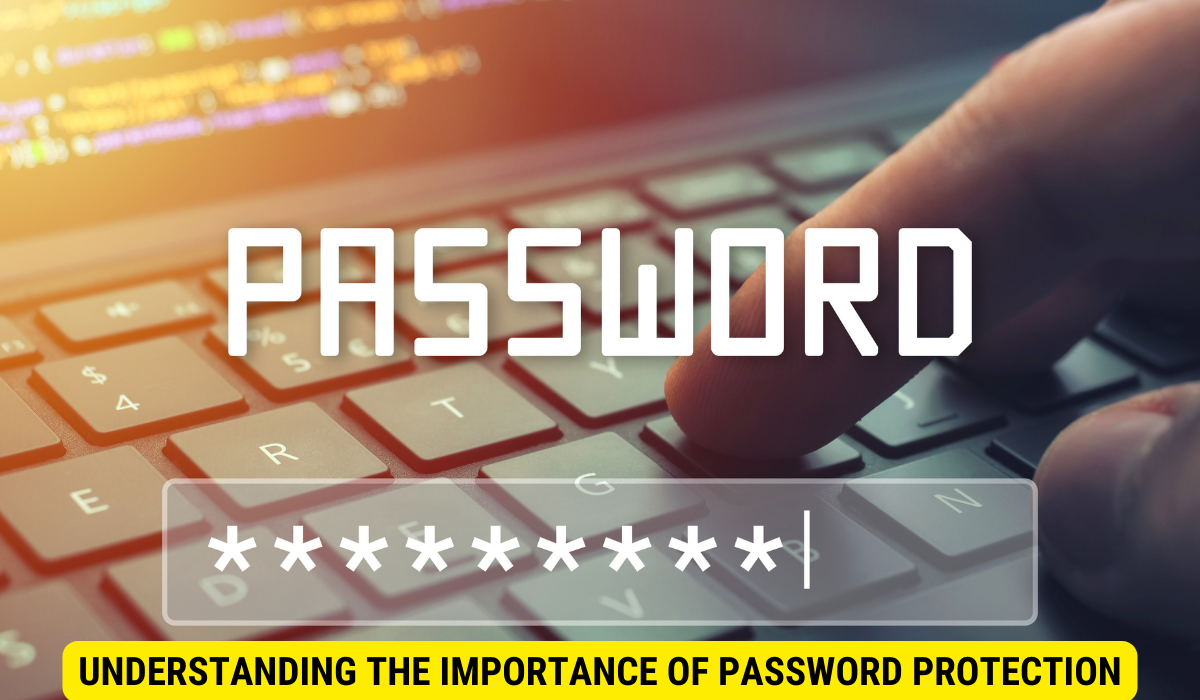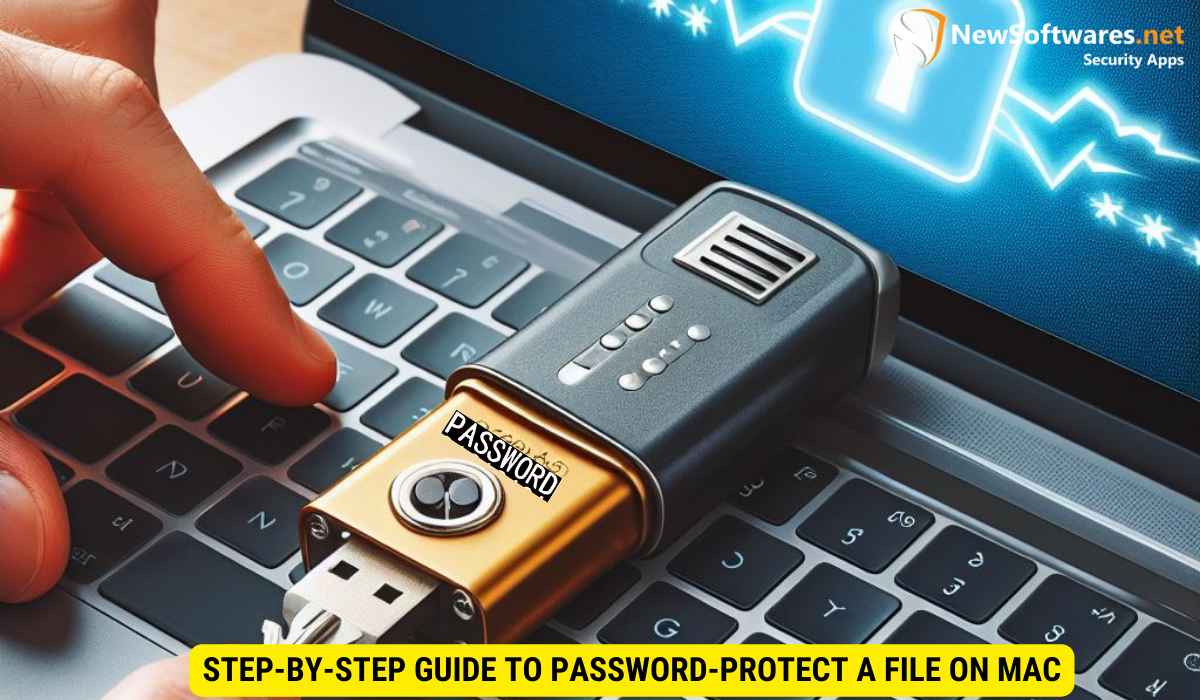Secure your flash drive on Mac with password protection using Disk Utility. Follow a step-by-step guide for encryption and maintain data security.
In today’s digital age, protecting our sensitive information is more important than ever. One effective way to ensure the security of your data is by password-protecting your flash drive. I will guide you through the process of password-protecting a flash drive on your Mac, equipping you with the knowledge to safeguard your valuable information.
Understanding the Importance of Password Protection

Before diving into the steps, it’s crucial to grasp why password protection is so vital. By adding a password to your flash drive, you create a barrier between your data and unauthorized access. This additional layer of security helps to prevent potential breaches and protects your confidential information from falling into the wrong hands.
Furthermore, password protection is not only essential for individual users but also for businesses and organizations that deal with sensitive information. Implementing password protection protocols can safeguard valuable data, trade secrets, and customer details, ensuring compliance with data protection regulations and maintaining trust with stakeholders.
Why You Need to Password-Protect Your Flash Drive
Flash drives have become a popular tool for storing and transferring data due to their portability. However, this convenience also poses a significant risk if the drive falls into the wrong hands. Password protection ensures that only individuals with the authorized password can access the drive, providing you with peace of mind.
Moreover, in today’s digital age, cyber threats such as hacking, malware, and data breaches are on the rise. Password-protecting your flash drive adds an extra layer of defense against these evolving threats, reducing the likelihood of unauthorized access and data theft.
The Role of Encryption in Protecting Your Data
Encryption is a crucial component of password protection. By encrypting your flash drive, you scramble the data on the drive, making it unreadable without the decryption key (i.e., your password). Encryption ensures that even if someone gains physical access to your flash drive, they won’t be able to decipher the contents without the password.
Additionally, encryption technology continues to advance, offering stronger algorithms and methods to protect data. Understanding the encryption standards used in password protection can help users make informed decisions about securing their information. Regularly updating encryption protocols and staying informed about emerging encryption technologies are essential practices in maintaining the security of your data.
Preparing Your Flash Drive for Password Protection
Before you embark on the journey of securing your flash drive with a password, it’s crucial to ensure that your device is adequately prepared for the process. This involves more than just setting a password; it requires attention to detail and a methodical approach to safeguard your data effectively.
One essential step in preparing your flash drive for password protection is checking its format. The format of your flash drive plays a significant role in determining the success of the encryption process. It is highly recommended to format your flash drive as “Mac OS Extended (Journaled)” using Disk Utility. This particular format not only provides robust encryption support but is also widely recognized for its compatibility with password-protected drives. However, before you proceed with the formatting, it is imperative to back up any critical data stored on your flash drive. Formatting will erase all existing files, so it’s crucial to safeguard your information beforehand.
Checking Your Flash Drive’s Format
Firstly, check the format of your flash drive to ensure it is compatible with the password protection process. It’s recommended to format your flash drive as “Mac OS Extended (Journaled)” using Disk Utility. This format provides better encryption support and is commonly used for password-protected drives. However, make sure to back up any important data on your flash drive before formatting, as it will erase all existing files.
Backing Up Your Flash Drive Data
Before proceeding, it’s always a good idea to create a backup of the data on your flash drive. This ensures that even if something goes wrong during the password protection process, you won’t lose your valuable files. Take the time to copy all the data from your flash drive to a secure location on your Mac or an external storage device.
Moreover, safeguarding your data goes beyond just creating a backup. It involves a thoughtful consideration of where and how you store your backup. Ensure that the backup location is secure and easily accessible in case of emergencies. By taking these precautionary measures, you can embark on the password protection process with confidence and peace of mind.
Step-by-Step Guide to Password-Protect Your Flash Drive

Now that your flash drive is prepared, it’s time to dive into the step-by-step process of password-protecting it.
Accessing Disk Utility on Your Mac
To create a password-protected disk image, you’ll need to use Disk Utility, a built-in application on your Mac. Press Command + Space to open Spotlight Search, type “Disk Utility,” and press Enter to launch the program. Alternatively, you can find Disk Utility in the Applications > Utilities folder.
Creating a Password-Protected Disk Image
Once Disk Utility is open, select “File” from the menu bar and choose “New Image” > “Blank Image.” A dialog box will appear, allowing you to specify the name, size, format, and encryption options for the disk image. Choose a name for your disk image and set the size according to your needs. Select “Mac OS Extended (Journaled)” as the format and choose “256-bit AES encryption” as the encryption type for maximum security. Lastly, set the image format to “sparse disk image” to conserve disk space.
Saving and Loading Your Password-Protected Flash Drive
Once you’ve set the desired options, click “Save” to create the password-protected disk image. You will be prompted to set a password for the disk image. Choose a strong, unique password that combines uppercase and lowercase letters, numbers, and special characters. After entering your password, click “OK” and “Save” again to finalize the creation of the password-protected disk image. To access and load the flash drive, simply double-click the disk image file and enter the password when prompted.
Troubleshooting Common Issues
While the process of password-protecting your flash drive is relatively straightforward, it’s essential to be aware of and troubleshoot any potential issues that may arise.
What to Do If You Forget Your Password
If you forget the password for your password-protected disk image, it can be challenging to recover the data. Therefore, it’s crucial to keep a record of your passwords in a secure location. Additionally, consider using a password manager to securely store and manage your passwords.
Dealing with Errors During the Encryption Process
If you encounter any errors during the encryption process or while creating the password-protected disk image, ensure that your flash drive has enough free space and that you have the necessary permissions to perform the encryption. If issues persist, you may want to consider trying the process on a different flash drive or consulting Apple Support for further assistance.
Maintaining Your Password-Protected Flash Drive
Once you’ve successfully password-protected your flash drive, it’s important to practice good habits to maintain its security.
Regularly Updating Your Password
To enhance the security of your password-protected flash drive, make sure to periodically change your password. Choosing a strong, unique password and updating it regularly helps to mitigate the risk of unauthorized access to your data.
Safely Ejecting Your Flash Drive to Prevent Data Loss
Before physically removing your flash drive from your Mac, always remember to eject it properly. This action ensures that any ongoing read/write operations are completed, reducing the risk of data loss or corruption.
Key Takeaways
- Password protection adds an extra layer of security to your flash drive, preventing unauthorized access to your data.
- Encryption is the process of scrambling data on your flash drive, making it unreadable without the password.
- Ensure your flash drive is formatted correctly and back up any important data before proceeding with the password protection process.
- Use Disk Utility to create a password-protected disk image, choosing a strong password and 256-bit AES encryption.
- Regularly update your password and always eject your flash drive properly to maintain its security.
FAQs
Q: Can I password-protect any flash drive on my Mac?
A: Yes, you can password-protect most flash drives using the built-in Disk Utility tool on your Mac. However, it’s recommended to format your flash drive as “Mac OS Extended (Journaled)” for better encryption support.
Q: What happens if I forget the password for my disk image?
A: If you forget the password, it can be challenging to recover the data from the password-protected disk image. Make sure to keep a record of your passwords in a secure location to avoid this issue.
Q: Can I use the password-protected flash drive on other devices?
A: Generally, a password-protected flash drive created on a Mac can only be accessed on other Mac devices. However, you may need additional software or compatibility measures to access it on other platforms or operating systems.
Q: Are there any alternatives to password protection for securing my flash drive?
A: Yes, you can explore other options such as biometric authentication, hardware-based encryption, or secure USB drives. However, these alternatives may require additional hardware or software and can be more expensive.
Q: Can I remove the password protection from my flash drive?
A: Yes, you can remove the password protection from your flash drive. Open Disk Utility, select the password-protected disk image, and click “File” > “Decrypt.” However, keep in mind that this action will remove the password protection and make the data on your flash drive accessible to anyone.
Conclusion
Password-protecting your flash drive on your Mac is a crucial step in securing your confidential data. By understanding the importance of password protection and following a step-by-step guide, you can ensure that your sensitive information remains secure. Regularly updating your password and safely ejecting your flash drive are essential practices to maintain its security.
